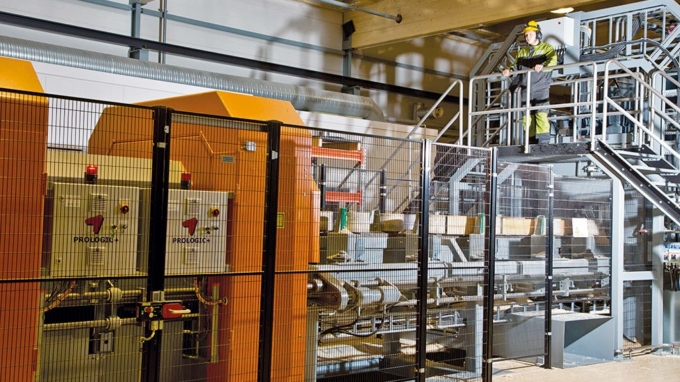Safety is a central part of any sawmill’s operations. When the majority of machinery is used automatically at high speeds, the machinery and processes pose a safety risk to their environment.
Safety automation
The machinery lines are equipped with automatic safety features to ensure appropriate and safe use of all machinery.
Machinery Directive
The safe control of sawmill lines is guided by the Machinery Directive, Standard SFSEN ISO 12100: 2012 Safety of machinery – General principles for design – Risk assessment and risk reduction and Standards SFSEN ISO 13849-1: 2015 and SFS-EN 62061: 2005 Safety-related parts of control systems.
According to the standards above, the manufacturer of a machine or its authorised representative must ensure that a risk assessment is carried out in order to determine the health and safety requirements applicable to the machine. The machine must be designed and constructed in such a way that takes the results of the risk assessment into consideration.
Risk assessments
Risk assessments define the relevant Required Performance Level or PLr. The Performance Levels are between PLa and PLe where ‘a’ is the lowest level and ‘e’ is the highest level. The minimum level is usually PLc. Components used in safety systems must be approved for the particular usage. Their manufacturer defines which is the correct level for the component in question.
Safety equipment components
Typical safety equipment components include:
- Safety light curtains that come in various models for different purposes
- Safety gates, locked or controlled by limit switches
- Safety scanners
- Safety switches
- Inductive safety limits
- Safety photocells
- Safety cameras
- Safety logic controllers

© Metsä Group/Studio Tomi Aho
Safety logig
Safety relays can be used for safety controls to some extent. However, this means that the safety function has little adaptability.
The more flexible way is to use a safety PLC logic controller that is used to control the main process.
The most recommendable method is to use a separate safety logic controller to ensure safety functions. This way the safety functions do not burden the main control system.
The safety system used must be documented, and it must state how the required safety level is reached with the safety system in question. Documentation can use, for example, the SISTEMA software that allows you to calculate and demonstrate that the electrical safety devices reach the required level.

